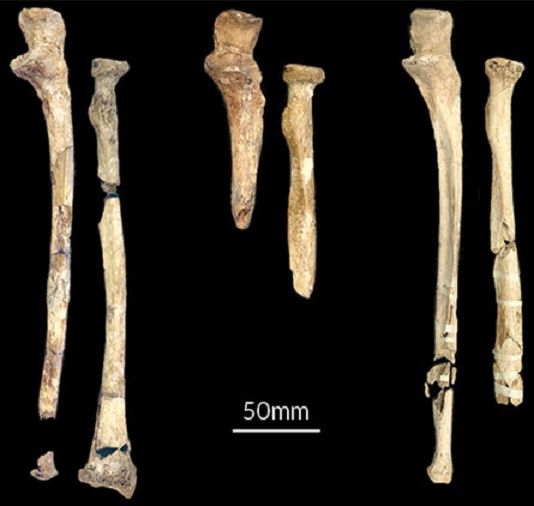For most of the last 45,000 years Europe was inhabited solely by hunter-gatherers. About 8,500 years ago a new form of subsistence -- farming -- started to spread across the continent from modern-day Turkey, reaching central Europe by 7,500 years ago and Britain by 6,100 years ago. This new subsistence strategy led to profound changes in society, including greater population density, new diseases, and poorer health. Such was the impact of farming on how we live that scientists have debated for more than 100 years how it was spread across Europe. Many believed that farming was spread as an idea to European hunter-gatherers but without a major migration of farmers themselves.

one neolithic genome originates [Credit: ©: K. Kotsakis and P. Halstead,
Paliambela Excavation Project Archive]
This week, an international research team led by paleogeneticists of Johannes Gutenberg University Mainz (JGU) publishes a study in the journal >Proceedings of the National Academy of Sciences showing that early farmers from across Europe have an almost unbroken trail of ancestry leading back to the Aegean.
The scientists analyzed the DNA of early farmer skeletons from Greece and Turkey. According to the study, the Neolithic settlers from northern Greece and the Marmara Sea region of western Turkey reached central Europe via a Balkan route and the Iberian Peninsula via a Mediterranean route. These colonists brought sedentary life, agriculture, and domestic animals and plants to Europe.
During their expansion they will have met hunter-gatherers who lived in Europe since the Ice Age, but the two groups mixed initially only to a very limited extent. "They exchanged cultural heritage and knowledge, but rarely spouses," commented anthropologist Joachim Burger, who lead the research. "Only after centuries did the number of partnerships increase."
Professor Joachim Burger, his Mainz paleogeneticist team, and international collaborators have pioneered paleogenetic research of the Neolithization process in Europe over the last seven years.

They showed a lack of interbreeding between farmers and hunter-gatherers in prehistoric Europe in 2009 and 2013 (Bramanti et al. 2009; Bollongino et al. 2013). Now, they demonstrate that the cultural and genetic differences were the result of separate geographical origins.
"The migrating farmers did not only bring a completely foreign culture, but looked different and spoke a different language," stated Christina Papageorgopoulou from Democritus University of Thrace, Greece,, who initiated the study as a Humboldt Fellow in Mainz together with Joachim Burger.
The study used genomic analysis to clarify a long-standing debate about the origins of the first European farmers by showing that the ancestry of Central and Southwestern Europeans can be traced directly back to Greece and northwestern Anatolia.
"There are still details to flesh out, and no doubt there will be surprises around the corner, but when it comes to the big picture on how farming spread into Europe, this debate is over," said Mark Thomas of University College London (UCL), co-author on the study. "Thanks to ancient DNA, our understanding of the Neolithic revolution has fundamentally changed over the last seven years."
Sedentary life, farming, and animal husbandry were already present 10,000 years ago in the so-called Fertile Crescent, a region covering modern-day Turkey, Syria, Iran, and Iraq. Zuzana Hofmanová and Susanne Kreutzer, the lead authors of the study, concluded: "Whether the first farmers came ultimately from this area is not yet established, but certainly we have seen with our study that these people, together with their revolutionary Neolithic culture, colonized Europe through northern Aegean over a short period of time."
Another study has shown that the spread of farming, and farmers, was not the last major migration to Europe. Approximately 5,000 years ago people of the eastern Steppe reached Central Europe and mixed with the former hunter-gatherers and early farmers. The majority of current European populations arose as a mixture of these three groups.
Source: Johannes Gutenberg Universitaet Mainz [June 06, 2016]






















